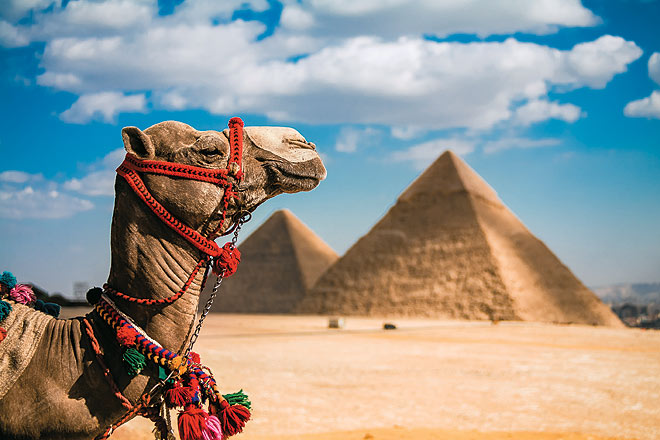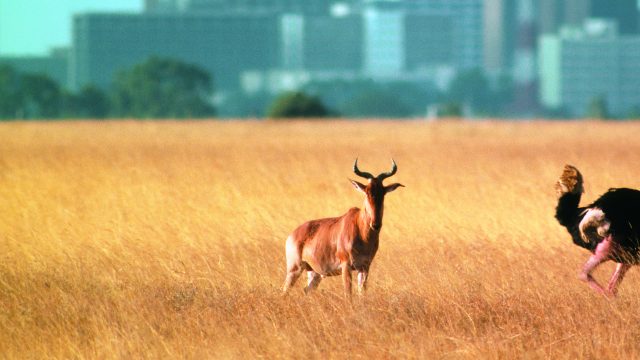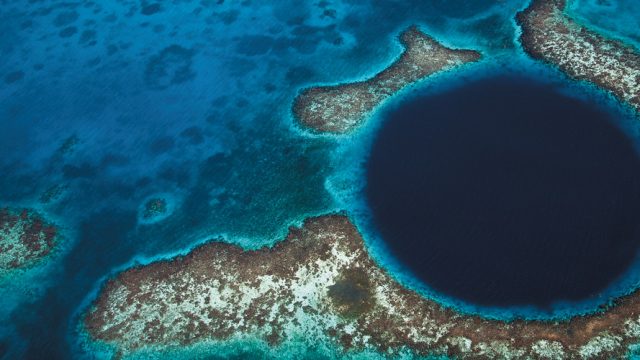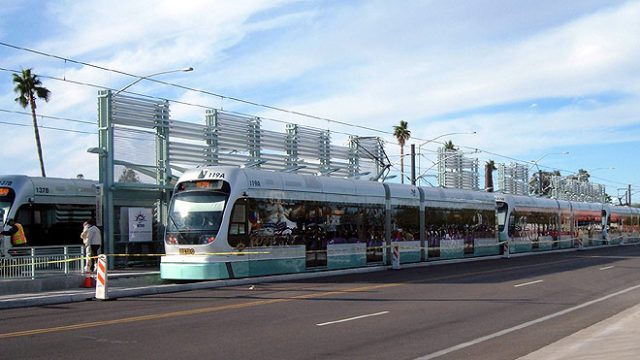Egypt:
Archaeologists believe pyramids are shaped as they are to represent a stairway for the pharaoh’s
Tanzania: Zanzibar
With beaches white as sugar, and the air thick with spices and the spirit of old Persia, the Zanzibar archipelago takes you right back in time. Spend the day roaming around spice farms in the Spice Island and have a look at the ‘lipstick tree’. Take in the history of Stone Town at the House of Wonders and the Arab Fort. Stop by the market for an authentic experience of a vibrant open-air market. Spend your morning taking in the former Slave Market to take a look around the old slave chambers and the memorial and church built on the site. The numerous breathtaking beaches like the Kendwa and the Ras Nungwi beach are perfect for surfing, deep sea fishing, kitesurfing as well as for spotting dolphin and green turtle.

Morocco: Atlas Mountains
Encompassing mountains, valleys and the mighty desert, the Atlas range in northwest Africa boasts of fortresses and natural wonders in abundance. Admire the grandeur of the Taourirt and Ait Ben Haddou fortresses, straight from the sets of Gladiator, or enjoy a day of picnicking and camping out at the Ouzoud waterfalls or the Tazaghart waterfalls. The Dades valley is a perfect destination for hiking while taking a walk through the Todra Gorge marks a peaceful retreat for all travellers. The Atlas mountains also have a number of different picturesque valleys like the Draa and the Ourika valleys. Make a visit to Kelaat M’gouna, or the ‘valley of roses’, and walk along the street of perfumeries for a fragrant end to your day.
South Africa: Gandhi Circuit
Gandhi’s eviction from a train in South Africa and, a hundred years later, this Gandhi-inspired tourism project is a trail of 13 stops. From the Old Court House Museum to the Pietermaritzburg Station where it all started, the Gandhi Circuit passes through the Vishnu Temple in Ladysmith, the Hamidia Mosque in Newtown, the site of the Old Fort Prison and even Grey Street. Stop at the Phoenix Settlement where a museum has been built, the Satyagraha House and even the old Tolstoy Farms, now known as the Brickworks. The Gandhi Circuit also covers the Smuts House, Olive Schreiner’s house and the Point Road, which has been renamed as Mahatma Gandhi Road. An excellent Mahatma Gandhi 101 tutorial.

Congo: Virunga
In the heart of the Congo at the Virunga National Park, life is infinite with more species of flora and fauna than in any other domicile—it seems to be almost a biosphere in itself. The Virunga National Park is the single largest protected area in terms of density of avian, mammal and reptile species. Here, the critically endangered mountain gorilla lives in harmony with the common chimpanzee. Also to be found here is an abundance of volcanoes, forests, lava plains and swamps, as well as a host of different savannas, swamps and valleys guarded by the mighty Rwenzori Mountains. A scenic drive from Goma later, head out for the gorilla trek and spend the night at one of the many tents available to catch a glimpse of an unforgettable natural ‘nightlife’. Drive up to the Mount Nyiragongo volcano to experience the world’s largest molten lava lake below.

Algeria:
With ancient ruins along the Mediterranean Sea, Algeria is a land of rich history. Best known for its stunning Sahara landscape, the five Mozabite cities in the M’zab Valley seem to turn the rough, rugged landscape into a work of art. The Saharan Atlas and Hoggar mountains tower above the city of Tamanrasset, providing a stunning natural fortress. Visit the enormous dunefield of Grand Erg Oriental and the rock carvings of Djelfa, or spend the day at a Mediterranean beach. Oran offers a blend of old and new with its colonial architecture and active nightlife, while Constantine echoes in its history. A drive along the Tizi Ouzou Mountains provide opportunities to see local wildlife.

Morocco: Casablanca
Well, a kiss is still a kiss in Casablanca; as the modern city stands eons away from its more traditional Moroccan counterparts. Wander across the alleys of the old Medina district and spend the evening relaxing at the Corniche. Enjoy a hint of European architecture at the Cathedral du Sacre Coeur and Portuguese influences at the Dar el Bahar Fortress in Safi. The charming little beach village of Oualidia is known for its splendid seafood while history is revisited at the old Kasbah at Azemmour.

Tanzania: Serengeti
From the summit of Naabi Hill that guards the entrance all the way through the grasslands kissing the horizon, the Serengeti National Park, takes you into the heart of the wild. One of the most famous national parks in Africa, Serengeti is home to over 1.5 million wildebeest and their breathtaking annual migration is an unforgettable experience to witness firsthand. Another stunning sight: droves of lions, cheetahs, leopards and hyenas devouring the many zebras, giraffes and gazelles, among others. Visit the Hippo Pool and the Seronera, or take a Balloon Safari over the National Park. The landscape ecosystem is full of treats for the interested eye and the wide variety of day tours available serve as a perfect flag-off for vistors.

Ethiopia: Lalibela
Walk a thousand years back in history in the cultural town of Lalibela with its intricate rock-carved churches and religious lure. Designed to be the ‘New Jerusalem’, Lalibela has 11 monolithic churches in three groups. Hike up to the monastery of Ashketon Maryam or visit the Yimrehane Kristos church, built within a cave. Make a stop at the weekly market to get insights into local life and experience the local weaving culture. Lalibela also offers a number of eco-trekking opportunities to explore the rich flora and fauna including the gelada baboon and Ethiopian wolf. Spend the evening in Old Abyssinia for some traditional Ethiopian food, dance and a stunning view of the valley. Walk a thousand years back in history in the cultural town of Lalibela with its intricate rock-carved churches and religious lure. Designed to be the ‘New Jerusalem’, Lalibela has 11 monolithic churches in three groups. Hike up to the monastery of Ashketon Maryam or visit the Yimrehane Kristos church, built within a cave. Make a stop at the weekly market to get insights into local life and experience the local weaving culture. Lalibela also offers a number of eco-trekking opportunities to explore the rich flora and fauna including the gelada baboon and Ethiopian wolf. Spend the evening in Old Abyssinia for some traditional Ethiopian food, dance and a stunning view of the valley.
Madagascar:
With natural diversity unlike any other on the planet, it’s only appropriate that Madagascar is often called the ‘eighth continent’. Visit the Ranomafana National Park, Andasibe-Mantadia and the Masoala National Park for the thick, lush forests, streams and, of course, the unique biodiversity. The Tampolo, Ambodilaitry and Ifaho marine parks, and Ifaty, are great spots for snorkelling and kayaking. The Royal Hill of Ambohimanga, once home to royalty, is sacred to the people of Madagascar and holds artefacts of the great king. The Avenue of Baobabs is right out of fantasy with the baobab trees towering over the landscape. The Ile Sainte Marie and the Nosy Be are perfect for a day at the beach.

Botswana:
In the heart of the Kalahari, amidst the grasslands and the thorny trees, wildlife thrives in Botswana. The Okavango Delta, full of endless flood plains and papyrus trees, is home to a variety of leopards, lions, cheetahs and multiple avian species along with various different predators. Visit the Nxai Pan to see elephants in their environment and head to the Tsodilo Hills for a glimpse of the centuries-old rock paintings. The Chobe National Park is a must for all wildlife enthusiasts and the Central Kalahari Game Reserve might just be the last true wilderness on earth.

South Africa: Cape Town
A vibrant modern metropolis, and one of the most important coordinates of medieval maritime exploration and travel, Cape Town has a definitive place in human history. With its potpourri of cultures brought together by various colonial powers from East Africa, the city is as diverse as it gets. Trek or take a cable car up Table Mountain to experience a flatland paradoxically located atop a hill. The Cape of Good Hope should be visited too, since it is an essential navigation point used by explorers in the past. Robben Island, containing a prison facility where Nelson Mandela was once imprisoned, is 11km from town.
Zambia / Zimbabwe: Victoria Falls
Spanning a colossal width of 5,600ft, the Victoria Falls appear like an infinite curtain of gushing water, plunging over 100 metres in a spectacular fashion. It is the natural border separating the African nations of Zambia and Zimbabwe. Other than gorging on the visual feast, you can partake in various adventure activities such as bungee jumping and whitewater rafting. A great time to go would be March-April, when the falls are in full glory. If you are approaching from Zambia, travel 11km south from the town of Livingstone. From Zimbabwe, the border has to be crossed.
South Africa: Kruger
This is as close to the ‘wild’ in wildlife as you can get anywhere on the African continent. The 360km-long (yes!) territory in South Africa is home to the ‘Big 5’ including lions, leopards, African elephants, rhinos and buffaloes. It boasts of luxurious Land Rover-fuelled safaris and exquisite resorts, but also bush lodges and camps that will make the experience even more intimate. Be sure to take along guides, who are sure to know the lion’s favourite water source or the rhino’s favourite grazing ground. Kruger National Park is a six-hour drive from Johannesburg.

Namibia:
Namibia manages to pack in the brutal Namib Desert, the lush Etosha National Park and the spirited Fish River Canyon all in the same 800,000 sq km landmass. Here, life may be difficult due to the variety of landforms and the aridness of the desert but tourism is an absolutely breathtaking experience. The Canyon, open May to December, has a number of different activities to offer its tourists, including a National Park, and you can do anything here from hiking, relaxing in hot springs, picnicking to just enjoying the sights. The Etosha National Park is filled with myriad bird, reptile and mammal species, and can be entered from Von Lindequist, King Nehale and Andersson. One must not miss the salt and clay pan Sossusvlei either, where the sand dunes are scarlet and, in many cases, taller than skyscrapers.

Tanzania: Kilimanjaro
Mount Kilimanjaro is not only the most famous dormant volcano in the world, but is also the highest peak in all of Africa. Mount Kilimanjaro, with its three volcanic cones, Kibo, Mawenzi and Shira, is a climber’s delight, as literally anyone irrespective of his or her expertise is allowed to ascend to the rim. The closest airport is Kilimanjaro International Airport. From there it’s a 90-minute drive to Moshi, the nearest town. Tour operators are able to arrange the whole package, complete with stay and permits, and the trek usually takes five to nine days. There are six different possible routes to scale Mount Kilimanjaro—the Marangu route, the Machame route, the Rongai route, the Lemosho route, the Umbwe route and the Shira route. The Mweka route is meant for descent. Eventually, you will find yourself nearly 20,000ft above sea level, beyond a solid layer of clouds, at Uhuru Peak. Here, the view is spectacular and brings one as close to the zenith as possible.

Sudan:
There are more pyramids in Sudan than in neighbouring Egypt, and we know you did not know that. But that’s not all—these Nubian Pyramids that populate the northern part of Sudan (known as Nubia in ancient times) are testament to Nubian power at one end, and its independence from the Egyptians at the other. Travellers can visit the three sites where the pyramids were constructed, namely Kerma, Napata and Meroe, to explore these small but steep structures built across centuries by the Kushite rulers of this region. The pyramids at Meroe, located 200 kilometres northeast of the capital Khartoum, are particularly famous.

Mali: Mosque of Djenne
Mud bricks and wooden beams characterise the Sudano-Sahelian style of architecture, the greatest achievement of which is the Great Mosque of Djenne. It resembles a 16m-tall sandcastle, although its intricate detailing and architectural finesse is far beyond anything one would imagine. Located in Djenne town of central Mali, it is 398km northeast of the Malian capital of Bamako. A Unesco World Heritage Site, the Great Mosque was first built in the 13th century and the current structure is estimated to be 109 years old. It is an Islamic as well as a cultural hub, and has been under attacks from militants of late.

Tunisia:
Tunisia is a rather poetic country, and why wouldn’t it be considering its Arabic culture and the influence of Judaism until half a century ago? It is a nation soaked in a world of philosophy, music and Sufism. Tunis is the capital and boasts of a combination of European and Arabic architecture. You should try to experience both these facets of its history by visiting the ruins of Carthage as well as the new city built by French colonialists. The Muslim and Jewish quarters of Jerba, the beautiful beached-city of Sousse along the Meditteranean Coast and the fantastically designed Jerba Islands in the central coast are other major attractions.
Algeria
Atlas Mountains
Botswana





